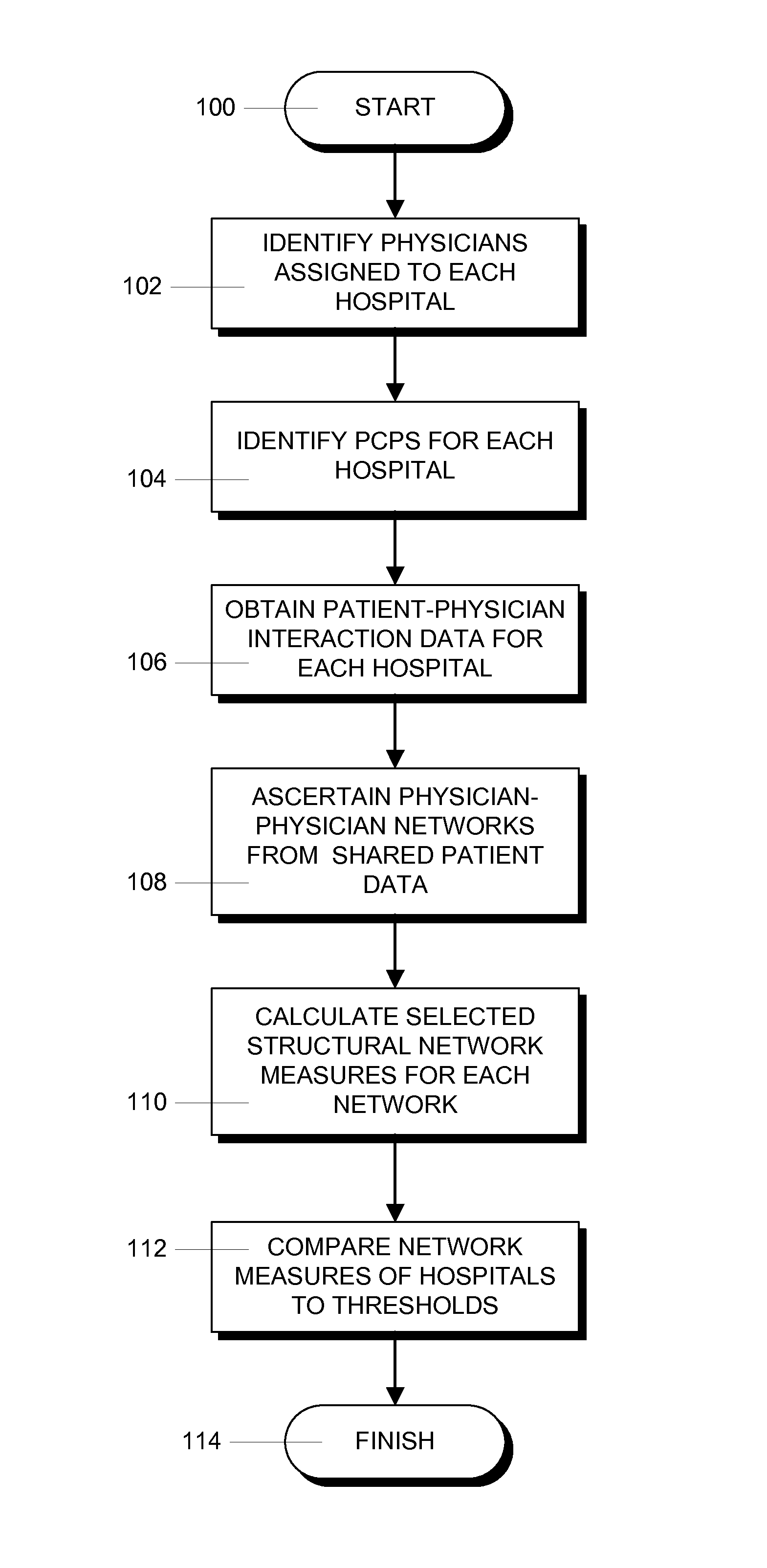Method for using physician social networks based on common patients to predict cost and intensity of care in hospitals
a technology of social networks and physicians, applied in the field of health care, can solve the problems of not fully explaining, no studies have indicated how, , affecting health care costs either at individual hospitals or across entire regions
- Summary
- Abstract
- Description
- Claims
- Application Information
AI Technical Summary
Benefits of technology
Problems solved by technology
Method used
Image
Examples
Embodiment Construction
[0018]FIG. 1 shows the steps in an illustrative process for comparing predicted health care costs for a particular hospital to other hospitals. The process begins in step 100 and proceeds to step 102 where physicians assigned to the hospitals are identified. This is done by examining the hospital referral region (HRR) of each hospital. First, physicians with offices in the HRR for a hospital are identified. Then, using the method described in an article entitled “Assigning Ambulatory Patients and Their Physicians to Hospitals: a Method for Obtaining Population-based Provider Performance Measurements”, J. P, Bynum, E. Bernal-Delgado and D. Gottlieb, Health Service Research, v. 42, pp 45-62 (2007), physicians with offices located in an HRR are assigned to the associated hospital if they filed most of their inpatient claims at that hospital, or if they did not do any inpatient work, they are assigned to the hospital if most of the patients that they saw received inpatient care at that ...
PUM
 Login to View More
Login to View More Abstract
Description
Claims
Application Information
 Login to View More
Login to View More - R&D
- Intellectual Property
- Life Sciences
- Materials
- Tech Scout
- Unparalleled Data Quality
- Higher Quality Content
- 60% Fewer Hallucinations
Browse by: Latest US Patents, China's latest patents, Technical Efficacy Thesaurus, Application Domain, Technology Topic, Popular Technical Reports.
© 2025 PatSnap. All rights reserved.Legal|Privacy policy|Modern Slavery Act Transparency Statement|Sitemap|About US| Contact US: help@patsnap.com



